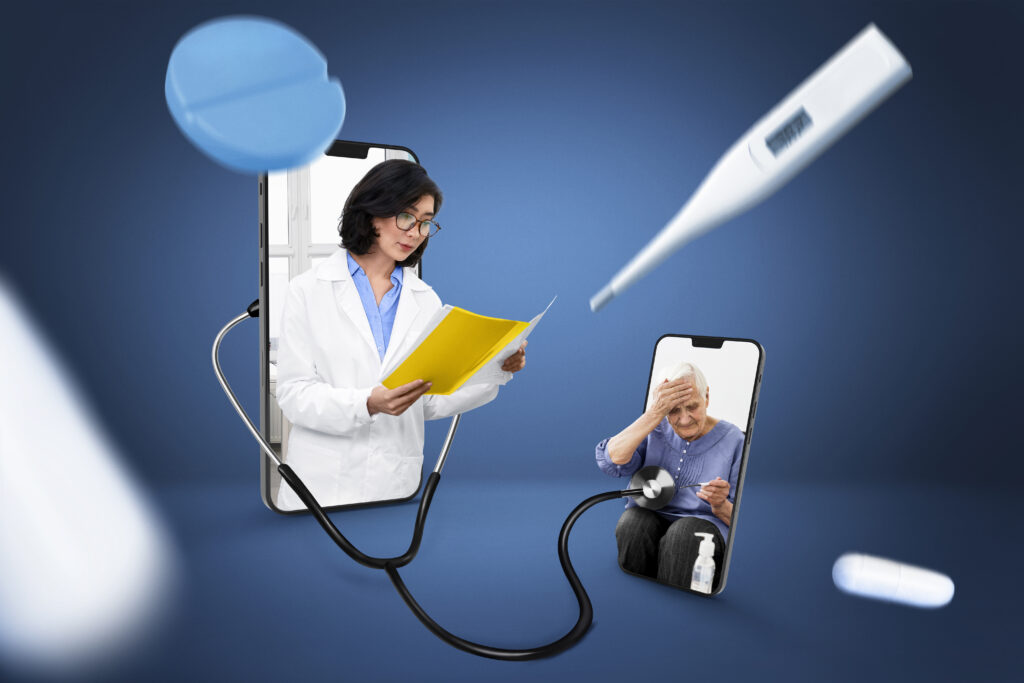
In recent years, the healthcare industry has witnessed a significant shift towards remote patient monitoring (RPM). This innovative approach allows healthcare providers to monitor patients’ vital signs and health data remotely, improving patient outcomes and reducing the burden on healthcare facilities. In this blog post, we will explore the CPT codes used in RPM and delve into the exciting future of this transformative technology.
Remote patient monitoring (RPM) involves the use of digital technologies to collect medical and other forms of health data from individuals in one location and electronically transmit that information securely to healthcare providers in a different location for assessment and recommendations.
Understanding CPT Codes in Remote Patient Monitoring
- One commonly used CPT code for RPM is 99453, which covers the initial setup and patient education on the use of RPM equipment. This code allows healthcare providers to bill for the time spent on educating patients about the benefits and usage of remote monitoring devices. Remote monitoring of physiologic parameter(s) (e.g., weight, blood pressure, pulse oximetry, respiratory flow rate), initial set-up and patient education on use of equipment.
- Another important CPT code is 99454, which covers the supply and daily recording or transmission of patient-generated health data. This code enables healthcare providers to bill for the ongoing monitoring and analysis of patient data collected through remote monitoring devices. Remote monitoring of physiologic parameter(s) (e.g., weight, blood pressure, pulse oximetry, respiratory flow rate), initial device(s) supply with daily recording(s) or programmed alert(s) transmission, each 30 days.
- Additionally, CPT code 99457 covers the first 20 minutes of clinical staff time spent on interactive communication with the patient or caregiver each month. This code recognizes the importance of ongoing communication between healthcare providers and patients, allowing for timely interventions and adjustments to treatment plans. Remote physiologic monitoring treatment management services, 20 minutes or more of clinical staff/physician/other qualified healthcare professional time in a calendar month requiring interactive communication with the patient/caregiver during the month.
- Additionally, CPT Code 99458 covers remote physiologic monitoring treatment management services, additional 20 minutes of clinical staff/physician/other qualified healthcare professional time in a calendar month requiring interactive communication with the patient/caregiver during the month (List separately in addition to code for primary procedure)
The Future of RPM: Revolutionizing Healthcare Delivery
The future of remote patient monitoring holds immense potential for transforming healthcare delivery. Here are some key areas where RPM is expected to make a significant impact:
- Chronic Disease Management: RPM has the potential to revolutionize the management of chronic diseases such as diabetes, hypertension, and heart disease. By continuously monitoring patients’ vital signs and health data, healthcare providers can detect early warning signs, intervene promptly, and prevent complications.
- Post-Operative Care: RPM can enhance post-operative care by remotely monitoring patients’ recovery progress, vital signs, and medication adherence. This proactive approach allows healthcare providers to identify any potential complications early on, reducing the need for readmission and improving patient outcomes.
- Aging Population: With the global population aging rapidly, RPM can play a crucial role in ensuring the well-being of older adults. By remotely monitoring their health status, healthcare providers can provide timely interventions, reduce hospitalizations, and enable seniors to age in place comfortably.
- Mental Health Monitoring: RPM is not limited to physical health monitoring; it can also be extended to mental health conditions. By tracking patients’ mood, sleep patterns, and medication adherence, healthcare providers can offer personalized interventions and support for mental health conditions such as depression and anxiety.
- Telemedicine Integration: The integration of RPM with telemedicine platforms allows for seamless virtual consultations and remote monitoring. Patients can have real-time video consultations with healthcare providers while simultaneously sharing their health data, enabling comprehensive and personalized care from the comfort of their homes.
Conclusion:
Remote patient monitoring, with its specific CPT codes and reimbursement mechanisms, is revolutionizing healthcare delivery. By leveraging technology to remotely monitor patients’ vital signs and health data, healthcare providers can improve patient outcomes, reduce hospitalizations, and enhance the overall quality of care. As we look to the future, the potential of RPM to transform chronic disease management, post-operative care, support the aging population, monitor mental health, and integrate with telemedicine is truly exciting. The future of healthcare lies in the hands of remote patient monitoring, unlocking a new era of personalized and accessible care for all.
